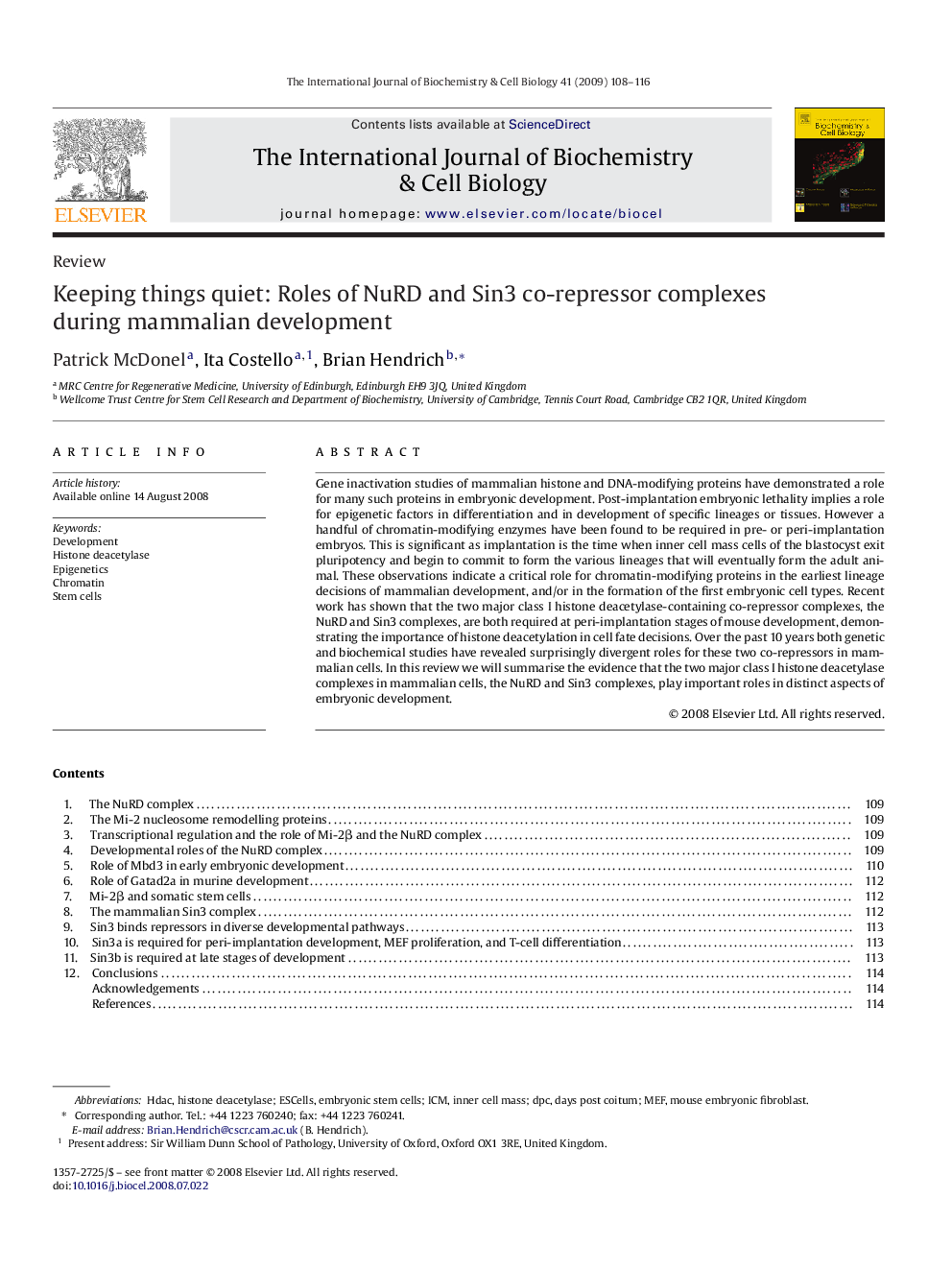| Article ID | Journal | Published Year | Pages | File Type |
|---|---|---|---|---|
| 1985191 | The International Journal of Biochemistry & Cell Biology | 2009 | 9 Pages |
Gene inactivation studies of mammalian histone and DNA-modifying proteins have demonstrated a role for many such proteins in embryonic development. Post-implantation embryonic lethality implies a role for epigenetic factors in differentiation and in development of specific lineages or tissues. However a handful of chromatin-modifying enzymes have been found to be required in pre- or peri-implantation embryos. This is significant as implantation is the time when inner cell mass cells of the blastocyst exit pluripotency and begin to commit to form the various lineages that will eventually form the adult animal. These observations indicate a critical role for chromatin-modifying proteins in the earliest lineage decisions of mammalian development, and/or in the formation of the first embryonic cell types. Recent work has shown that the two major class I histone deacetylase-containing co-repressor complexes, the NuRD and Sin3 complexes, are both required at peri-implantation stages of mouse development, demonstrating the importance of histone deacetylation in cell fate decisions. Over the past 10 years both genetic and biochemical studies have revealed surprisingly divergent roles for these two co-repressors in mammalian cells. In this review we will summarise the evidence that the two major class I histone deacetylase complexes in mammalian cells, the NuRD and Sin3 complexes, play important roles in distinct aspects of embryonic development.
